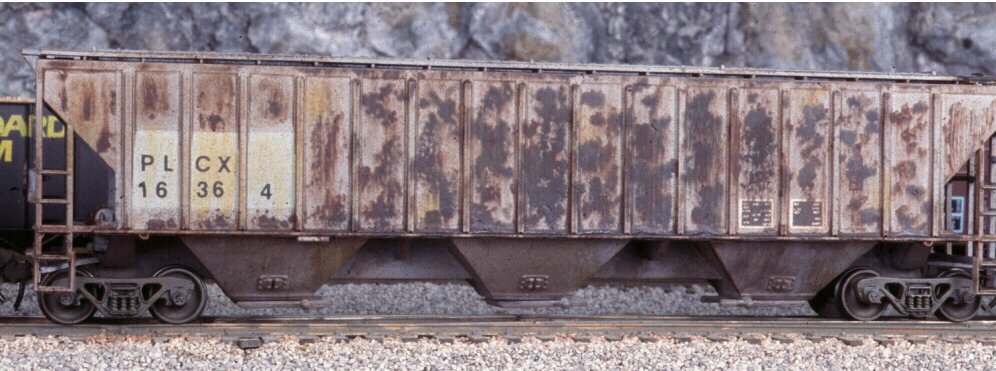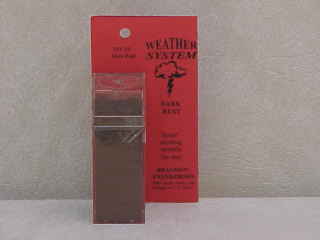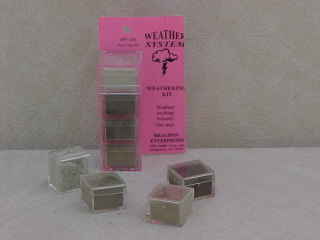
If you have any questions about items to order, run into any difficulties, or wish to purchase or inquire about items that are not yet on the site, kindly contact me directly at "[email protected]"
Please note that it is difficult to automatically calculate accurate shipping for very small and light items, like parts, etched steps, etc. But feel free to place your order regardless, with the assurance that I will refund any and all freight over charges upon shipping. You will pay actual shipping plus a small handling charge to cover shipping supplies in all cases.
Shipping update: I will ship via USPS Priority Mail only, as UPS and FedEx are not interested in dealing with small shippers. Please note that while USPS has been generally very reliable and the tracking is excellent, if they damage a shipment, even to the point of crushing the box, they WILL NOT pay a claim in my experience. All shipping is therefore done on a best effort basis. While we will work with you to resolve any damaged shipments, be advised that insurance from USPS is unlikely to work, period. We are very experienced in proper packaging and always do our best to insure the product arrives safely.
For both International AND Domestic orders, if shipping amount seems high, be assured that I will credit any shipping over-charges at time of order shipment.
by Mike Rose
I use a variety of methods to model rust, including oil colors, paints, and rub-on powders. Here is a brief overview of each method.
I use the Winton brand of artist's oil colors, primarily involving Raw Umber, Burnt Umber, Raw Sienna, Burnt Sienna, Titanium White, and Black. I'd suggest starting with those primary weathering colors, and if you see some other rich brown that you'd like to try, by all means grab it! 1 tube of oil colors may last your lifetime, and it never seems to go bad. One tube I use I purchased when I was 16 years old and it's still good (I'm 44 now, to put that in perspective)! The above car used all these colors except white. I also use a variety of brushes, including a sharply angled end brush, a very tiny bristled brush, and a 1.2" wide soft brush for most of my effects.

PLCX 16364 Prototype Photo, Barstow Yard on Santa Fe (Mike Rose Photo)

PLCX 16364 as shown in RailModel Journal (John Vessella photo, Mike Rose model)
For the above car, the various rust colors were dabbed on in layers and gently blended, then given a final wash down the side of the car with the 1/2" brush slightly wet with mineral spirits to get a "rust washed downwards" look. I was careful to avoid the area of the reporting marks, since that was to get a much lighter treatment. After letting the model dry for several days until the odor of the oils was no longer evident, I gave the car a couple of coats of Testor's Dullcote straight from the aerosol can to protect what I'd already done, then used a lighter rust treatment and a bit more mineral spirits to produce the effect on just the reporting marks. This also got a Dullcote sealer once dry.
II. Other Methods
Acrylic Paint-
I often use a combination of techniques
to
get an effect that I'm looking for. When it comes to paint, I generally
use Polyscale and some Model Flex paints for weathering. The colors
to get are 414329 Polyscale RR Tie Brown, 414323 Polyscale Rust, 414293
Zinc Chromate Primer, and Model Flex 16-172 Rust. (While I'm at it,
might as well recommend a good "grime" color, the always surprising Polyscale
414176, UP Harbor Mist Gray!) I generally start with RR Tie Brown,
and add some Rust to it, either brand (yes, I actually mix Polyscale and
Model Flex! Though they separate in storage, a quick shake and they're
back together long enough to use.) If I'm looking for a "new" rust,
I might add just a bit of the Zinc Chromate Primer, but go easy, a little
goes a long way here. The two brands' rust colors are quite different
from one another.
I try to never measure my mixing proportions, so that in service I get natural variations in the fleet. I have over one thousand freight cars and over 250 engines, and all (if they are in service) have Kadee couplers and either Jay Bee or NWSL wheels that are painted some rust color variant. These paints hand brush very well, and I often use a Paasche single action airbrush to do base rust coats on roofs and other parts.
Weathering Powders-
Lots of folks use powdered chalks for
weathering, but this has the disadvantage of either rubbing off, retaining
fingerprints, or "going away" when clear-coated to protect it. I've
had great results with the weathering powders from Bragdon Enterprises Their
powders have an adhesive component built into the powder itself, actuated
by rubbing! When stroked on with a brush and "massaged" into place,
they stay put, and look good. They also go a long way.
Rustall-
This is a good option for easy "quick and dirty" rust and grime techniques, just apply per the manufacturers' directions. But note, since Rustall is alcohol based, it WILL fade a Dullcoted model! Be sure to do your Rustall techniques before using Dullcote, that's a safe order of business. See the product pages for Rustall purchasing options.
If anyone has any comments or questions they can feel free to e-mail me at "[email protected]".






